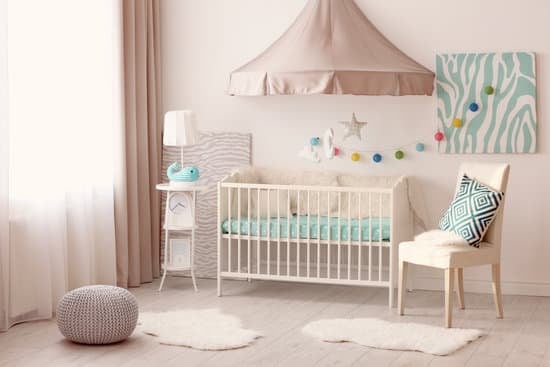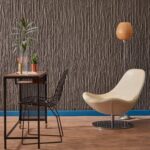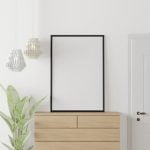Contemporary style has become increasingly popular in home decor, and for good reason. With its clean lines, minimalist approach, and focus on functionality, contemporary design offers a refreshing and modern aesthetic that can transform any space into a stylish haven.
Whether you’re moving into a new home or looking to refresh your current space, understanding the principles of contemporary style is key. In this article, we will explore the key elements of contemporary design and provide you with valuable insights on how to decorate your home in this sleek and trendy style.
When it comes to contemporary style, simplicity is key. The design philosophy focuses on creating an uncluttered and harmonious space by eliminating unnecessary elements. This approach allows for an open and airy feel while highlighting the beauty of each furniture piece or decor item. By incorporating clean lines, neutral color palettes, and minimalistic accessories, you can achieve a contemporary look that exudes elegance and sophistication.
Additionally, contemporary design places great emphasis on functionality. Every element in the space should have a purpose and contribute to the overall aesthetic. Furniture selection plays a crucial role in achieving this balance between form and function. By opting for pieces with clean lines and simple shapes, you can create a visually pleasing environment that maximizes both comfort and practicality.
With our comprehensive guide, you’ll gain valuable insights into the principles of contemporary style that will enable you to transform your home into a sleek haven that truly reflects your personal taste and lifestyle. From choosing the perfect color palette to selecting furniture that embraces minimalism, we’ll walk you through each step of the process so that you can bring your contemporary vision to life with confidence and enjoy the stunning results.
Understanding the Principles of Contemporary Style
Contemporary style is a popular choice for many homeowners due to its clean lines, minimalism, and timeless appeal. In this section, we will delve deeper into the principles of contemporary style and explore its key elements. Understanding these principles will help you create a cohesive and visually pleasing contemporary design for your home.
One of the key elements of contemporary style is simplicity. Clean lines are essential in achieving this look, so it’s important to choose furniture and decor pieces that have sleek and straight edges. Avoid ornate or intricate designs, as they do not align with the minimalist aesthetic of contemporary style. Instead, opt for pieces with smooth surfaces and geometric shapes.
Another element to consider when decorating in a contemporary style is texture. While the overall look may be quite streamlined, incorporating various textures can add depth and visual interest to your space. Consider using materials such as glass, metal, leather, or natural fibers like jute or bamboo. Mixing different textures can create a dynamic contrast within your design.
In addition to simplicity and texture, contemporary style also emphasizes the importance of open space. This means making use of negative space to create an airy and uncluttered feel in your home. Avoid overfilling a room with furniture or accessories; instead, opt for fewer but well-selected pieces that are functional and contribute to the overall aesthetic of the space.
To summarize:
- Choose furniture and decor with clean lines and minimalistic designs.
- Incorporate various textures to add depth and visual interest.
- Embrace open space by avoiding clutter.
By understanding these principles and exploring the key elements of contemporary style, you’ll be on your way to creating a modern and sophisticated look in your home décor.
Choosing the Perfect Color Palette
When it comes to decorating your home in a contemporary style, choosing the perfect color palette is key. The right colors can help create the sleek and sophisticated look that is characteristic of contemporary design. In this section, we will explore how to use both bold and neutral tones to achieve the desired effect.
Contemporary design often incorporates a mix of bold and neutral colors to create visual interest and balance. One approach is to use a neutral color, such as white, beige, or gray, as the base color for walls and larger furniture pieces. These neutral tones provide a clean canvas for other elements in the room and allow them to stand out.
To add pops of color and personality to your space, consider incorporating bold tones through accessories or accent pieces. This can be done through vibrant throw pillows, colorful artwork, or even a statement piece of furniture in a bright hue. These bold touches will draw attention and create focal points within the space.
Another way to incorporate color into contemporary design is through the use of contrasting tones. For example, pairing dark neutrals like black or charcoal with lighter shades like white or cream can create a striking contrast that adds depth and dimension to a room.
Remember that when working with colors in contemporary design, less is often more. It’s important not to overwhelm the space with too many vibrant hues. Stick to a cohesive color palette consisting of two or three main colors that complement each other well.
By carefully selecting and combining bold and neutral tones in your home decor, you can create a contemporary space that feels cohesive, balanced, and visually appealing. Experimenting with different combinations will help you find the perfect color palette that reflects your personal style while maintaining the sleek aesthetic of contemporary design.
Furniture Selection
Contemporary design is all about clean lines, minimalism, and simplicity. The furniture you choose plays a crucial role in creating a cohesive and stylish contemporary look in your home. By embracing clean lines and minimalism, you can achieve a sleek and sophisticated aesthetic that is both functional and visually appealing.
Choosing the Right Furniture
When selecting furniture for your contemporary space, opt for pieces that have simple yet striking designs. Look for clean lines, geometrical shapes, and smooth surfaces. Avoid ornate detailing or excessive embellishments, as they can detract from the minimalist style of contemporary design.
Materials and Finishes
In contemporary design, materials such as metal, glass, and leather are commonly used to create sleek and modern furniture pieces. These materials have a cool and polished appearance that complements the overall aesthetic. You can also incorporate wood elements with smooth finishes to add warmth to the space without compromising the minimalist style.
The Importance of Scale
Consider the scale of your furniture when designing a contemporary space. Opt for pieces that are proportional to the room size to maintain balance. Oversized furniture may overpower smaller spaces while undersized furniture may leave larger rooms feeling empty or disproportionate. Finding the right balance will ensure that your furniture enhances the overall look of your home.
Arrangement and Placement
The arrangement and placement of furniture contribute significantly to achieving a contemporary style. Ensure there is ample space between each piece for a clean and uncluttered look. To maintain the minimalist aesthetic, avoid overcrowding by carefully considering what furniture pieces are necessary for each room.
By selecting furniture that embraces clean lines, minimalism, and proportionality while incorporating appropriate materials and finishes, you can effectively create a contemporary atmosphere in your home. Remember to also consider arrangement and placement to achieve an overall cohesive look throughout your living spaces.
Mastering the Art of Lighting
Incorporating the right lighting is crucial when it comes to achieving a contemporary style in your home decor. Lighting not only enhances the overall aesthetic of a space, but it also plays a significant role in creating ambiance and highlighting key design elements. In this section, we will explore how to master the art of lighting and seamlessly incorporate contemporary fixtures and natural light into your home.
When it comes to contemporary lighting fixtures, clean lines and minimalist designs are key. Opt for sleek and simple light fixtures that have a modern appeal. Pendant lights with geometric shapes or linear chandeliers can make a dramatic statement in any room. Wall sconces with metallic finishes or sculptural designs add an elegant touch while providing soft, indirect lighting.
Another essential aspect of mastering contemporary lighting is considering the use of natural light. Contemporary design often embraces large windows, open floor plans, and an abundance of natural light. Maximizing the amount of natural light in your space not only makes it feel brighter and more spacious but also helps to create a seamless connection between indoor and outdoor spaces. To achieve this, consider using sheer curtains or blinds that allow sunlight to filter through while maintaining privacy.
In addition to incorporating contemporary fixtures and natural light, layering your lighting sources is essential in creating a well-lit space with different levels of illumination. Utilize task lighting for specific areas such as reading nooks or workspaces, ambient lighting for overall illumination, and accent lighting to highlight architectural features or artwork. A combination of these different types of lighting will help create depth and visual interest throughout your home.
By mastering the art of incorporating contemporary fixtures and natural light into your home decor, you can create a warm and inviting atmosphere that complements the overall design style. Remember to choose sleek and minimalist fixtures, maximize natural light, and utilize layered lighting for optimal results. With these strategies in mind, you can effectively enhance the beauty of your space while adding functionality through well-planned lighting design.
Accentuating Your Space
In contemporary design, artwork and accessories play a crucial role in accentuating your space and adding personality to your home decor. The right selection and placement of art pieces can enhance the overall aesthetic appeal of your contemporary-style interior. Additionally, carefully chosen accessories can elevate the look of your space and create a cohesive design scheme. In this section, we will explore how to effectively use artwork and accessories in contemporary design.
When it comes to incorporating artwork in a contemporary-style home, it is essential to choose pieces that align with the principles of this design style. Contemporary art often features abstract or minimalist compositions, with clean lines and bold shapes. Opting for large-scale pieces can make a bold statement and create a focal point in your room. Whether you choose paintings, sculptures, or mixed media artwork, make sure they complement the color palette and theme of your space.
In addition to artwork, carefully selected accessories can add layers of interest to your contemporary design. Start by choosing accessories that have clean lines and simple forms to maintain the sleek aesthetic of this style. Metallic accents, such as chrome or stainless steel vases, candleholders, or decorative bowls, can bring an elegant touch to your space. Incorporating textured fabrics through throw pillows or blankets can add warmth and depth to your furniture arrangements.
| Using Artwork in Contemporary Design | Using Accessories in Contemporary Design |
|---|---|
| – Choose abstract or minimalist compositions | – Select accessories with clean lines |
| – Opt for large-scale pieces for impact | – Use metallic accents like chrome or stainless steel |
| – Ensure they complement the color palette/theme | – Incorporate textured fabrics for warmth |
Flooring and Rugs
When it comes to decorating your home in a contemporary style, the choice of flooring and rugs plays a crucial role in achieving a sleek and polished look. Contemporary design emphasizes clean lines, simplicity, and functionality, so it’s important to choose flooring materials that not only complement the overall aesthetic but also provide durability and ease of maintenance.
One popular choice for contemporary flooring is hardwood or laminate flooring. These options bring a natural warmth to the space while adding a sense of sophistication. Opt for lighter wood tones like oak or maple for a more modern feel, or go for darker shades like walnut or mahogany for a touch of elegance. To create a seamless look, consider extending the same type of flooring from one room to another, creating visual continuity throughout your home.
In addition to hardwood or laminate flooring, another option that works well in contemporary design is concrete. Concrete floors offer an industrial yet chic aesthetic that instantly elevates any space. They are easy to clean and maintain and provide excellent durability. To add warmth and texture to your concrete floors, layer them with area rugs. Rugs not only soften the overall look but also act as an important element in defining separate areas within an open floor plan.
To create a cohesive design scheme, it is essential to choose rugs that complement the other elements in your space. Consider incorporating geometric patterns in bold colors or stripes for a more modern vibe. If you prefer neutral tones, opt for rugs with subtle textures or minimalistic designs. Additionally, placing different-sized rugs strategically can help section off spaces within an open concept layout while adding visual interest.
Achieving a sleek and polished look with your flooring and rugs requires careful consideration of materials, colors, patterns, and placement. By selecting appropriate options that align with the principles of contemporary design, you can create an inviting and stylish home that reflects your personal taste and enhances your living experience.
| Flooring Materials | Advantages |
|---|---|
| Hardwood or Laminate Flooring | – Adds warmth and sophistication\n – Easy to clean and maintain\n – Provides durability |
| Concrete Flooring | – Offers industrial yet chic aesthetic\n – Easy to clean and maintain\n – Provides excellent durability |
Creating Functional Spaces
In a contemporary home design, creating functional spaces is key to maintaining a clean and organized aesthetic. Incorporating storage solutions into your design not only helps keep your home clutter-free, but also adds to the overall sleek and polished look. Here are some tips on how to incorporate storage solutions into contemporary design.
Concealed Storage
One of the hallmarks of contemporary design is a focus on simplicity and clean lines. This means that clutter should be kept out of sight. Opt for furniture pieces that have hidden storage compartments such as ottomans with built-in storage or coffee tables with drawers. Wall-mounted shelves and floating cabinets are also great options for displaying items while keeping them neatly organized.
Built-in Cabinetry
Another way to incorporate storage in a contemporary space is through built-in cabinetry. Instead of relying solely on standalone furniture pieces, consider adding custom-made cabinets in areas like the living room, bedroom, or hallway. These can be designed to seamlessly blend with the rest of the room’s decor, providing ample storage while maintaining the clean lines that are characteristic of contemporary design.
Multi-functional Furniture
In a contemporary home, it’s essential to make use of furniture that serves multiple purposes. Look for pieces that have built-in storage options or can be transformed into different configurations as needed. For example, a sofa bed in the living room can provide additional sleeping space for guests, while also offering hidden storage within its frame.
Open Shelving
While concealed storage is important, incorporating open shelving can also add visual interest and display elements you want to showcase in a contemporary space. Use open shelves sparingly in areas such as kitchens or home offices to display decorative objects or store frequently used items while still maintaining an organized look.
By incorporating these storage solutions into your contemporary design, you can create a functional and stylish space. Remember to prioritize simplicity, clean lines, and hidden storage options to maintain the sleek aesthetic that defines contemporary style.
Outdoor Living
As you create a contemporary design for your home, don’t forget to extend the style to your outdoor spaces. Incorporating contemporary elements into your outdoor living areas can enhance the overall look and feel of your home, creating a seamless transition from indoors to outdoors. Here are some tips on how to bring contemporary style to your outdoor spaces:
- Start with the Furniture: Choose outdoor furniture that embraces clean lines and minimalist design principles. Opt for sleek and compact pieces that offer both comfort and functionality. Look for materials like teak or aluminum that are durable and weather-resistant. Consider incorporating modular seating options that can be easily rearranged to fit your needs.
- Embrace Natural Materials: In contemporary outdoor design, natural materials such as wood, stone, or concrete play a vital role in enhancing the aesthetic appeal of the space. Consider using these materials in flooring, wall cladding, or even for creating a focal point like a modern fireplace or water feature.
- Enhance with Lighting: Incorporate contemporary lighting fixtures into your outdoor spaces to create ambiance and highlight specific areas of interest. Use LED lights strategically to illuminate walkways or accentuate architectural features. Solar-powered lights can also be a sustainable and stylish choice for your outdoor lighting needs.
- Add Greenery: Incorporate plants and greenery into your outdoor space to add an organic touch and create a sense of tranquility. Opt for low-maintenance plants that thrive in your local climate conditions. Consider vertical gardening techniques or using planters in geometric shapes to add visual interest and enhance the contemporary feel.
- Define Zones: Create distinct zones within your outdoor space by using furniture placement or different flooring materials. For example, designate an area for dining with an outdoor table and chairs while having a separate lounge space with comfortable seating arrangements nearby.
By extending contemporary style to your outdoor spaces, you can create a cohesive look throughout your entire property. The key is to remain consistent with the principles of clean lines, minimalism, and embracing natural materials. With careful thought and creativity, your outdoor living areas can become an extension of your contemporary home decor and provide an inviting space for relaxation and entertainment.
Conclusion
As you conclude your journey into the world of contemporary home decor, you can finally bring your vision to life and enjoy the stunning results. By understanding and implementing the principles of contemporary style, selecting the perfect color palette, furniture, lighting, artwork and accessories, flooring and rugs, as well as creating functional spaces and extending the style to outdoor living areas, you have laid a solid foundation for achieving a sleek and polished look in your home.
Now, it’s time to step back and admire what you have accomplished. Contemporary style is all about simplicity, cleanliness, and functionality. It offers a sense of calmness and sophistication that can transform any space into an oasis of modern elegance. The use of clean lines, neutral tones mixed with bold accents, minimalism in furniture selection, strategic lighting choices, carefully curated artwork and accessories, as well as sleek flooring options all contribute to creating a harmonious and visually pleasing environment.
By incorporating storage solutions into your design plan, you not only maintain the minimalist aesthetic but also ensure that your space remains clutter-free and organized. Additionally, extending this contemporary style to your outdoor areas allows you to create an inviting atmosphere that seamlessly blends with the overall theme of your home.
As you sit back in your contemporarily designed space or stroll through your stylish outdoor area enjoying the beautiful results of your efforts, take pride in knowing that you have successfully created a home that reflects your personal taste and embraces modern design principles. Now it’s time to relax and appreciate the tranquil ambience that contemporary style brings, making every moment spent at home truly enjoyable.
Frequently Asked Questions
How can I decorate my home in contemporary style?
Decorating a home in contemporary style involves following a few key principles. First, it’s important to focus on simplicity and minimalism, as contemporary design often features clean lines and uncluttered spaces. This can be achieved by choosing furniture with sleek designs and avoiding excessive decorations.
Next, incorporating neutral colors such as white, black, or gray is common in contemporary decor. However, pops of bold colors can also be added through accent pieces or artwork to create visual interest. Lastly, using innovative materials like glass, metal, and concrete can enhance the modern feel of the space.
What makes a house contemporary style?
A house with contemporary style typically reflects the architectural trends and design elements of the present time. It often embraces open floor plans that promote a seamless flow between rooms and encourage natural light to fill the space.
Large windows are commonly found in contemporary homes to take advantage of outdoor views and blur the line between indoor and outdoor living spaces. Additionally, contemporary houses may incorporate sustainable features such as energy-efficient appliances or eco-friendly materials to align with modern environmental concerns.
What does contemporary home decor look like?
Contemporary home decor embodies a sleek and sophisticated aesthetic that focuses on combining form with functionality. The overall look is characterized by clean lines and smooth surfaces without any intricate detailing or ornamentation. Furniture is often minimalistic yet comfortable, featuring geometric shapes and simple designs rather than ornate carvings or heavy patterns.
Neutral color palettes prevail in contemporary decor schemes but are occasionally balanced by bold accents for contrast or monotone interiors for a striking effect. Texture may also be introduced through elements like textiles or artwork to add depth and visual interest to the space while still maintaining a refined overall appearance.

I’m thrilled to be your companion on this exciting journey through the world of home decor and design. With a passion for turning houses into homes and a keen eye for the finer details, I’m here to help you transform your living spaces into beautiful, functional, and meaningful havens.





